Outreach
FRNBES’ principal aim is to disseminate the results of our studies to land managers and the public. We are currently assembling several manuscripts from over five years of research for peer-reviewed publication. In addition, we share interim study results via numerous presentations to the general public, local conservation groups, bird clubs, municipalities, and state and federal wildlife agencies.
Conservation Activities Based on FRNBES Research
Mitigate Electrocution and Collision Hazards Near Active Nests
We partner with local utility companies to mitigate electrocution and collision hazards in the vicinity of Bald Eagle nests and communal roosts. Since these hazards are prevalent in most areas throughout the country, the most efficient strategy is to focus mitigation efforts in the highest eagle use areas—near nests and communal roosts. The first priority is to identify high-risk targets for mitigation nears nests and roosts. Over the past few years, we have frequently worked with United Power of Colorado, which has been attentive and responsive to many of our mitigation requests. The photos below show a team from United Power in 2018 covering high hazard conductors near the Erie Bald Eagle nest.
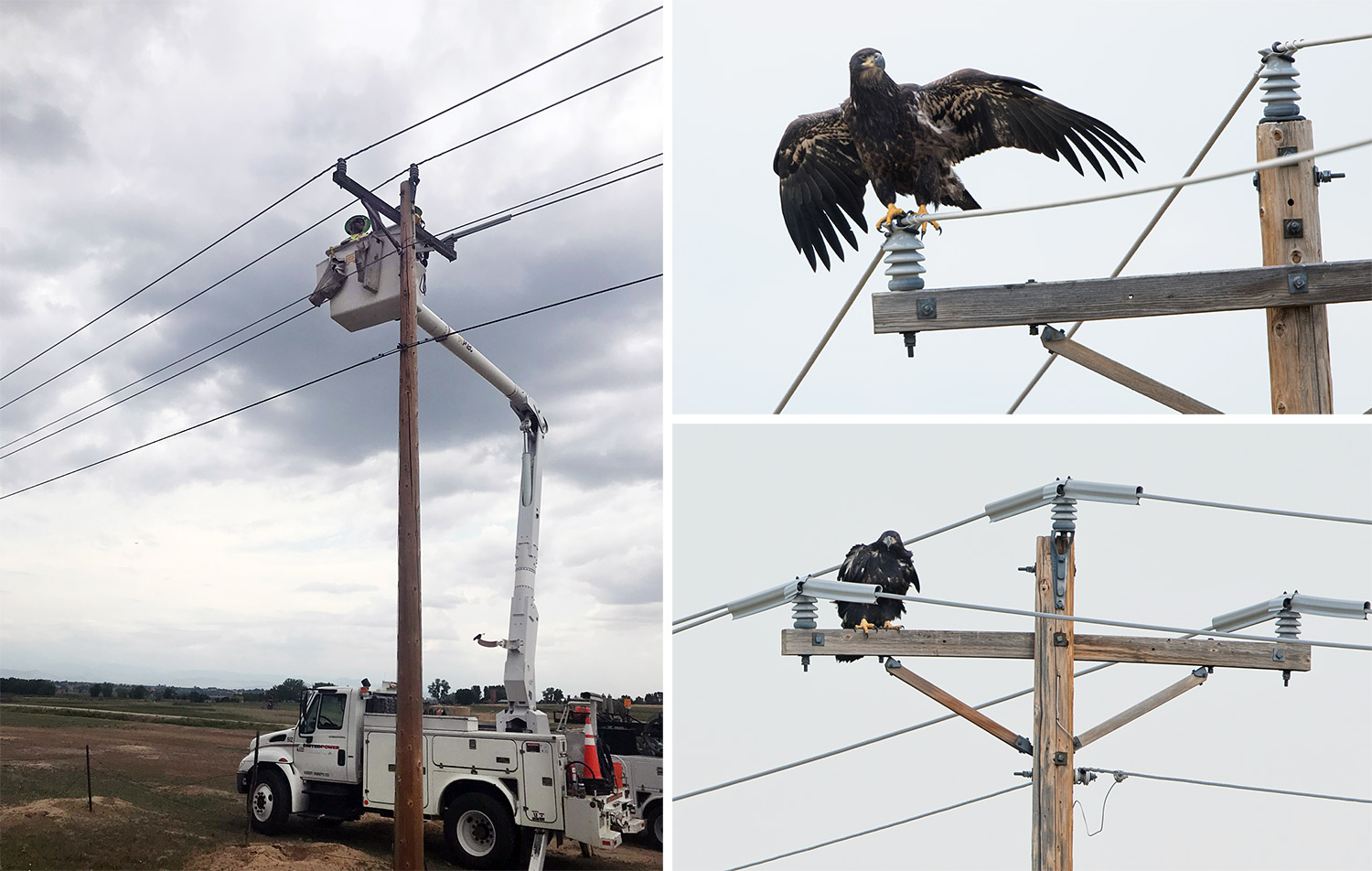
In the photo on the left, the United Power team is shown installing plastic covers on electrical conductors near the Erie Bald Eagle Nest in 2018. The top photo on the right shows a fledgling juvenile from the Erie nest on a high-risk power pole prior to mitigation. Simultaneous contact of wings along two parallel conductor wires would result in electrocution of this inexperienced flyer. In the bottom photo on the right, the same juvenile eagle is perched safely after completion of the mitigation work.
Wildlife Protection from Impacts of Oil and Gas Development
FRNBES is one of the founding members of the Wildlife and Biological Resources Coalition (WBRC). Our coalition formed after Governor Polis signed SB19-181 into law in April 2019, with the goal of contributing to new rules mandated by the law that protect wildlife and biological resources in Colorado from the impacts of oil and gas activity.
SB19-181 revised the Colorado Oil and Gas Conservation Act, and states that the Colorado Oil and Gas Conservation Commission “shall regulate oil and gas operations in a reasonable manner to protect and minimize adverse impacts to public health, safety and welfare, the environment, and wildlife resources, and shall protect against adverse environmental impacts on any air, water, soil, or biological resource resulting from oil and gas operations.”
FRNBES has documented the impact of largely unconstrained oil and gas development on eagles in and around our study area (see photo series below). As a member of the WBRC, we see the current rule-making process of the Colorado Oil and Gas Conservation Commission as a unique opportunity to ensure that enforceable, science-based rules are put in place that protect our state’s critical wildlife and biological resources from oil and gas extraction.
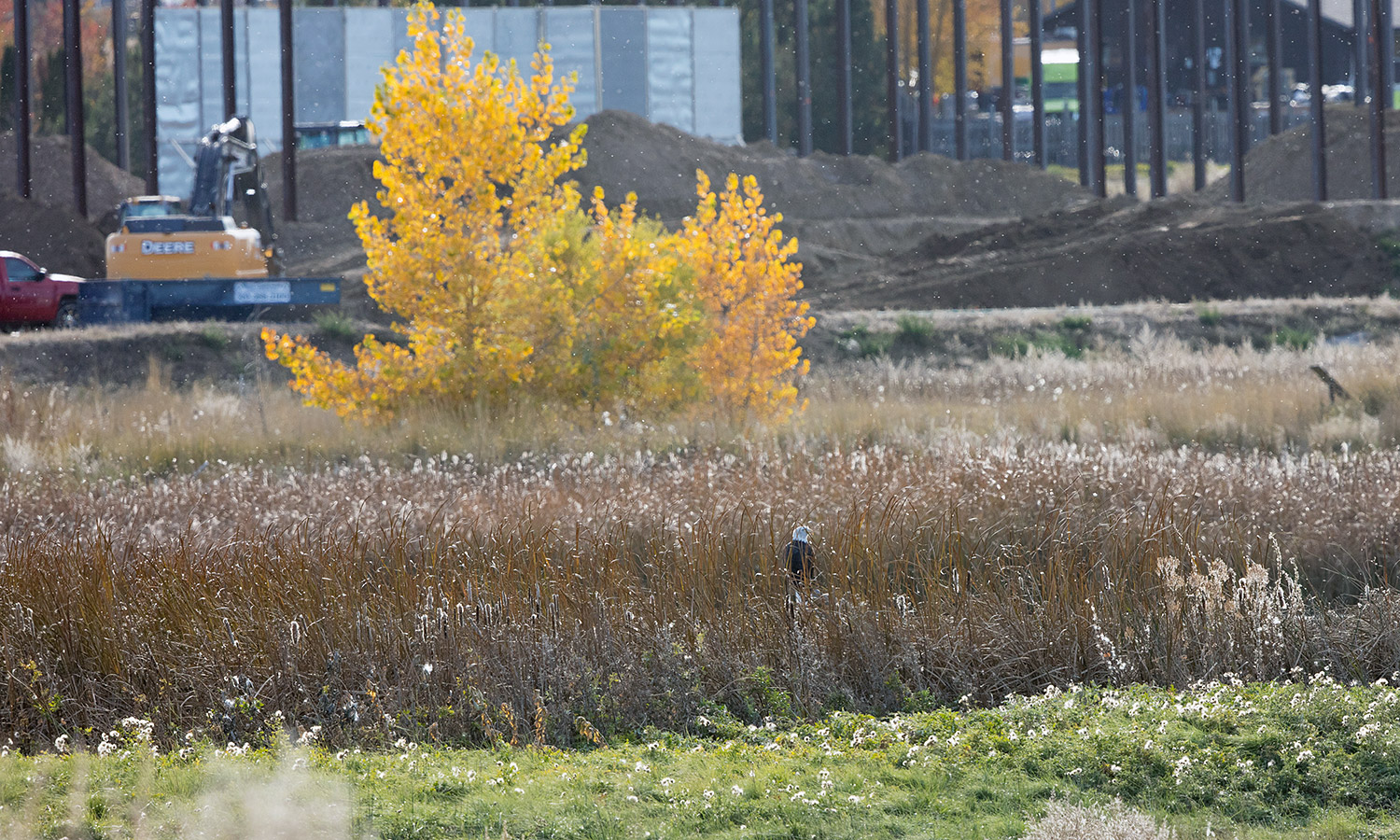
Erie adult female in Bulrush Wetland near her nest during a weekend pause of construction activity on a multi-well fracking pad in the background.

Bulrush Wetland surrounded by multi-well pad construction on the left, and well drilling on the right.
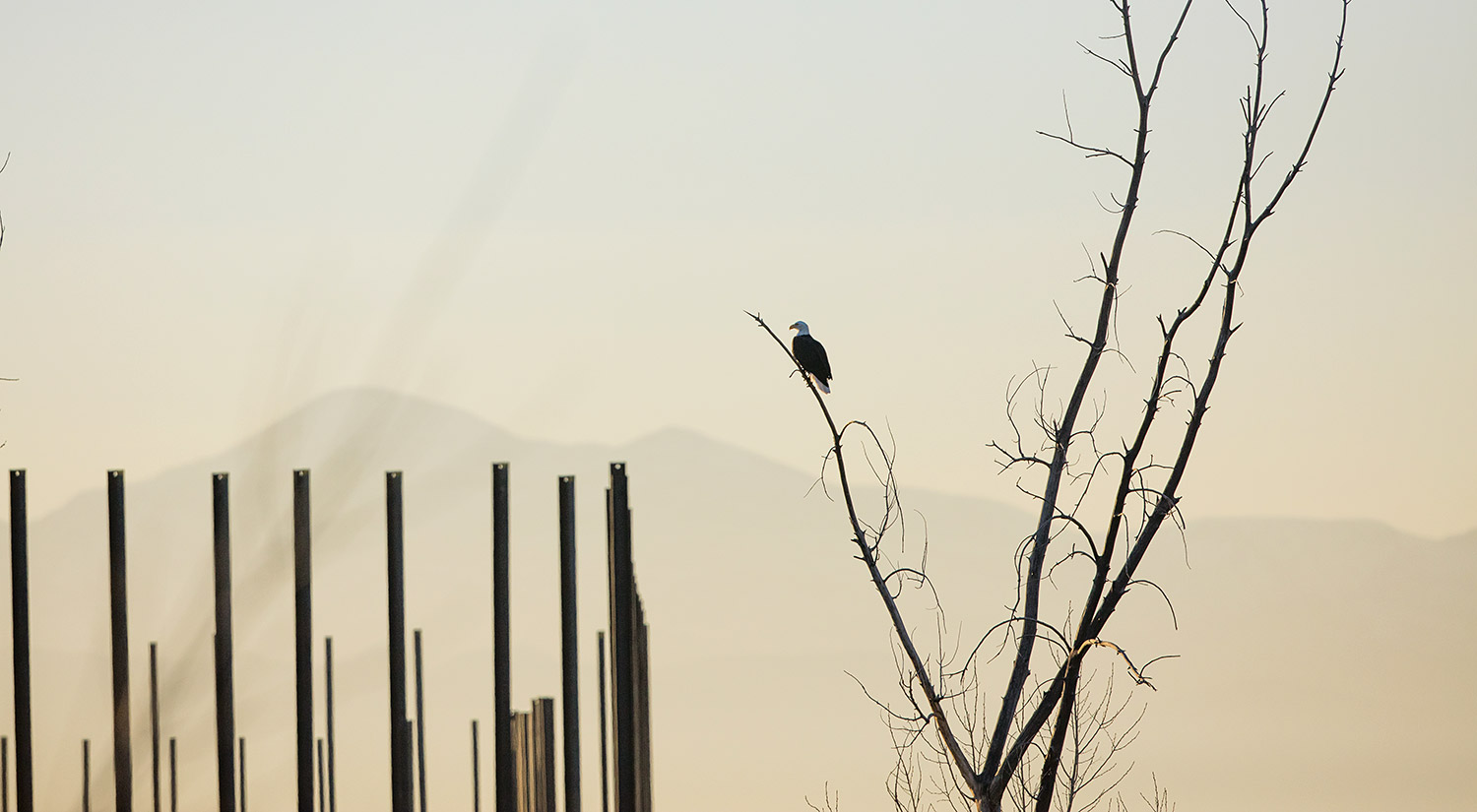
Erie adult eagle with beams from multi-well pad under construction in the background.

Boulder Creek Bald Eagle nest and oil and gas pipeline construction just 0.15 miles away.
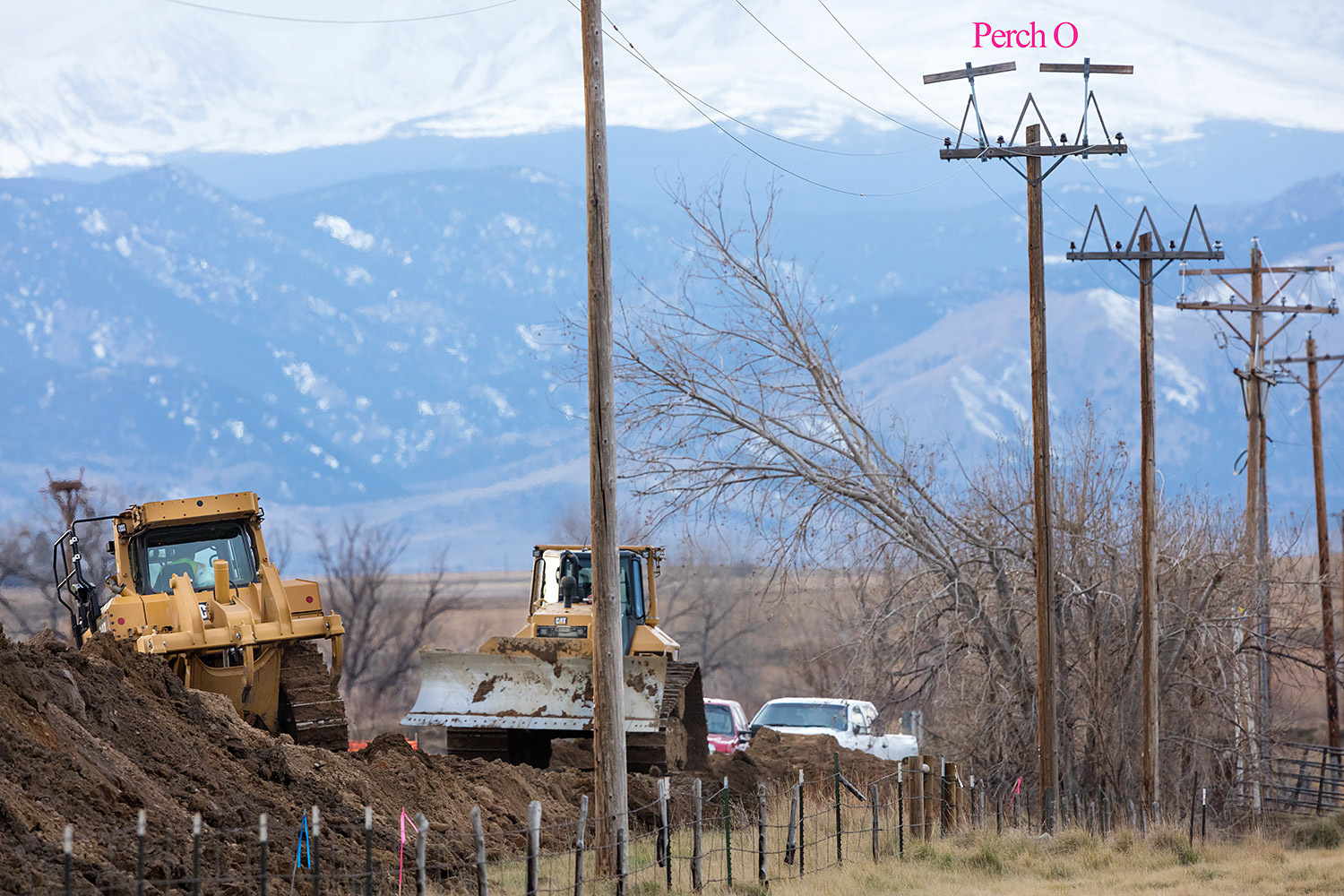
Oil and gas pipeline construction directly under one of the most utilized hunting perches near the Boulder Creek Bald Eagle nest.

Oil and Gas workover rig directly under the Middle Boulder Creek Communal roost; near the beginning of active roosting season.
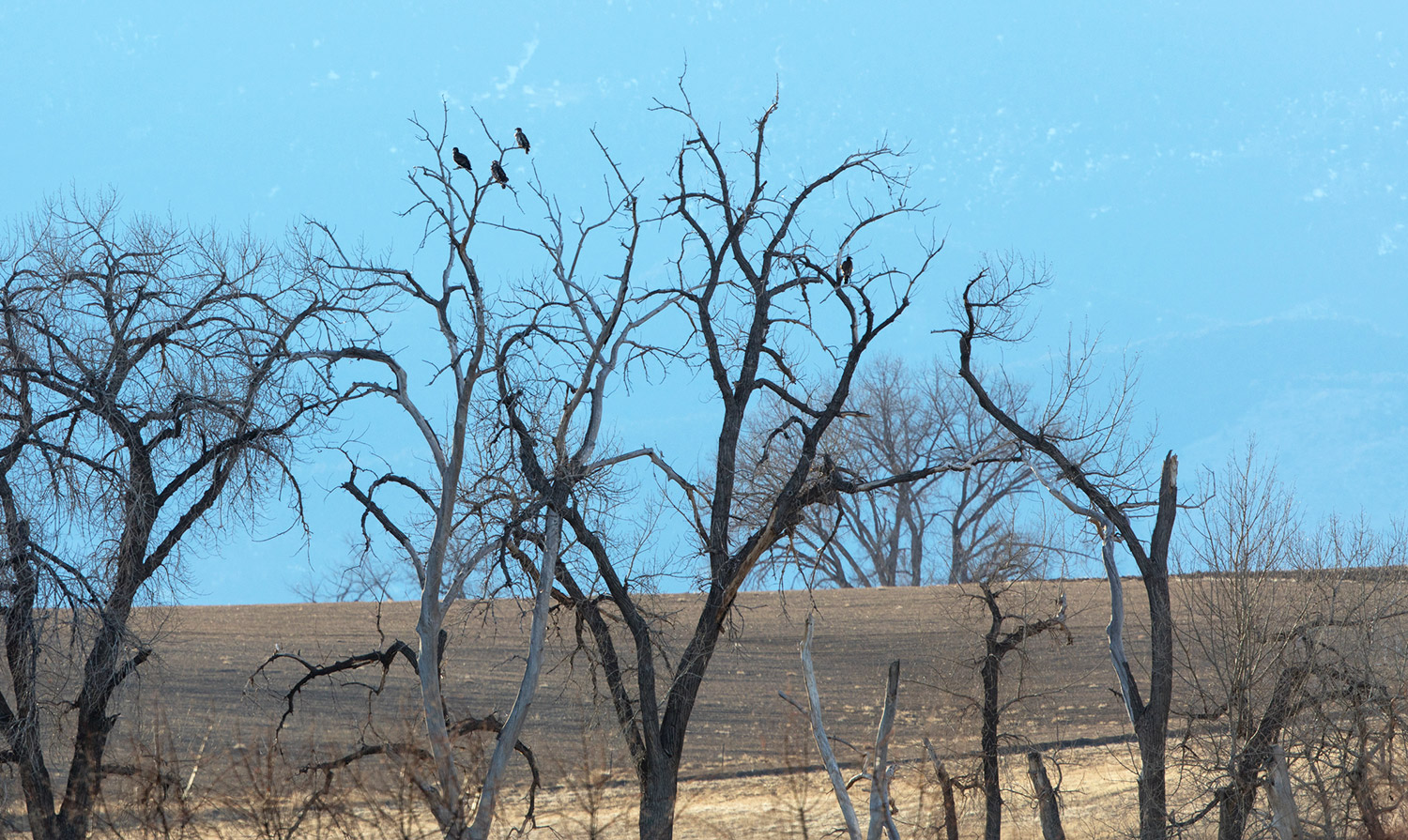
Four immature Bald Eagles at the Middle Boulder Creek Communal roost in late roosting season. In prime roosting season, we have observed as many as 23 Bald Eagle spending the night at this location.
Assessing Air Pollution from Fracking as a Threat to Bald Eagles
In the spring of 2018, FRNBES sponsored a collaborative air sampling study with Professor Detlev Helmig (INSTAAR) to assess the air pollution threat to nesting Bald Eagles from multi-well “fracking” operations near the Bulrush wetlands in western Weld County. Measurements showed that at Bulrush, just ten miles east of the Boulder Reservoir, oil and gas VOCs were already 4-6 times higher on average, providing an alarming message about how much higher these pollutants may be towards the center of oil and gas operations in central Weld County. Our findings are also relevant to the poor air quality in the Boulder area to the west.
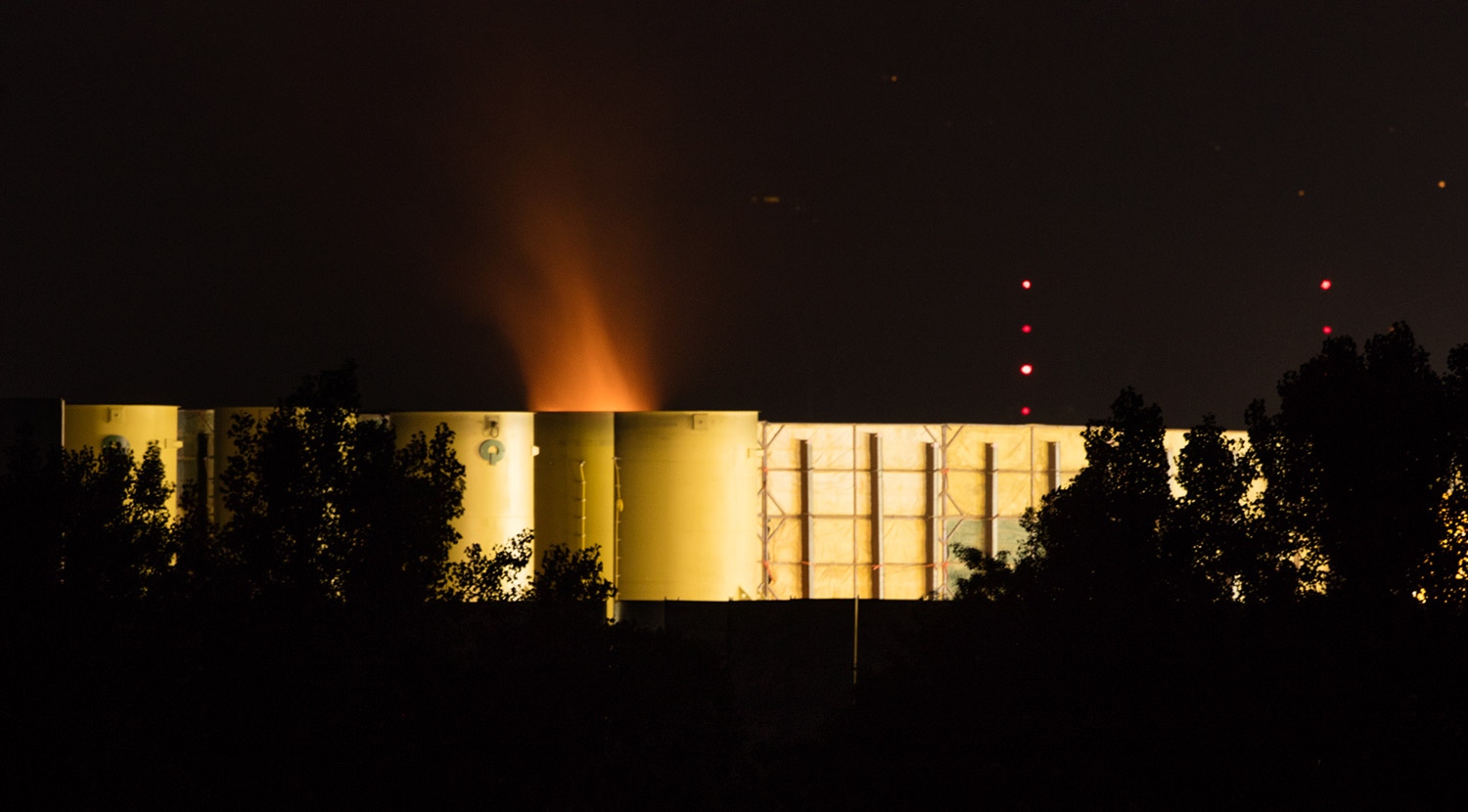
Giant flare stacks at the multi-well fracking pad at the Bulrush Wetland, near the Erie Bald Eagle nest.
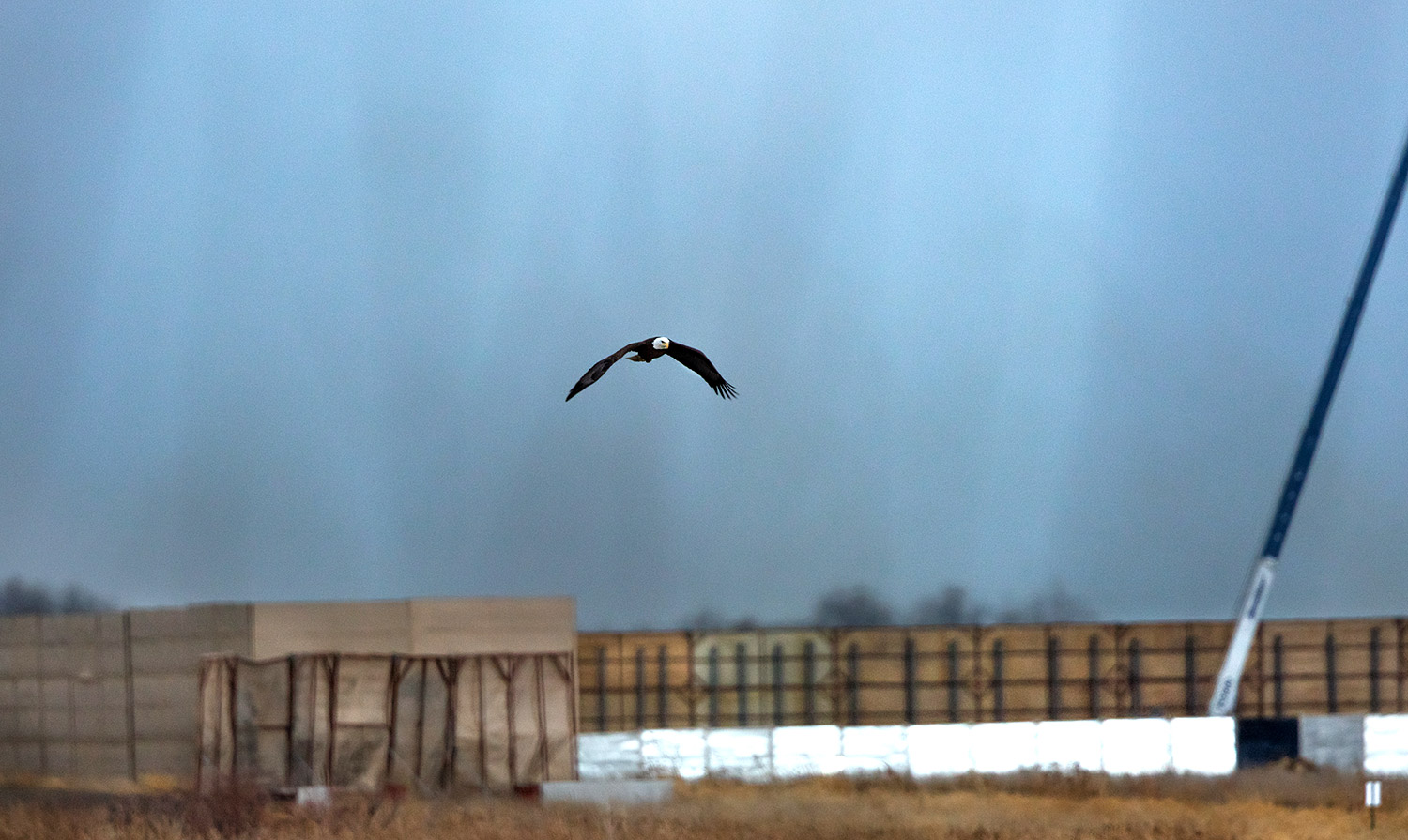
Erie male flying over the Bulrush wetlands during injection phase of fracking operations in the background.
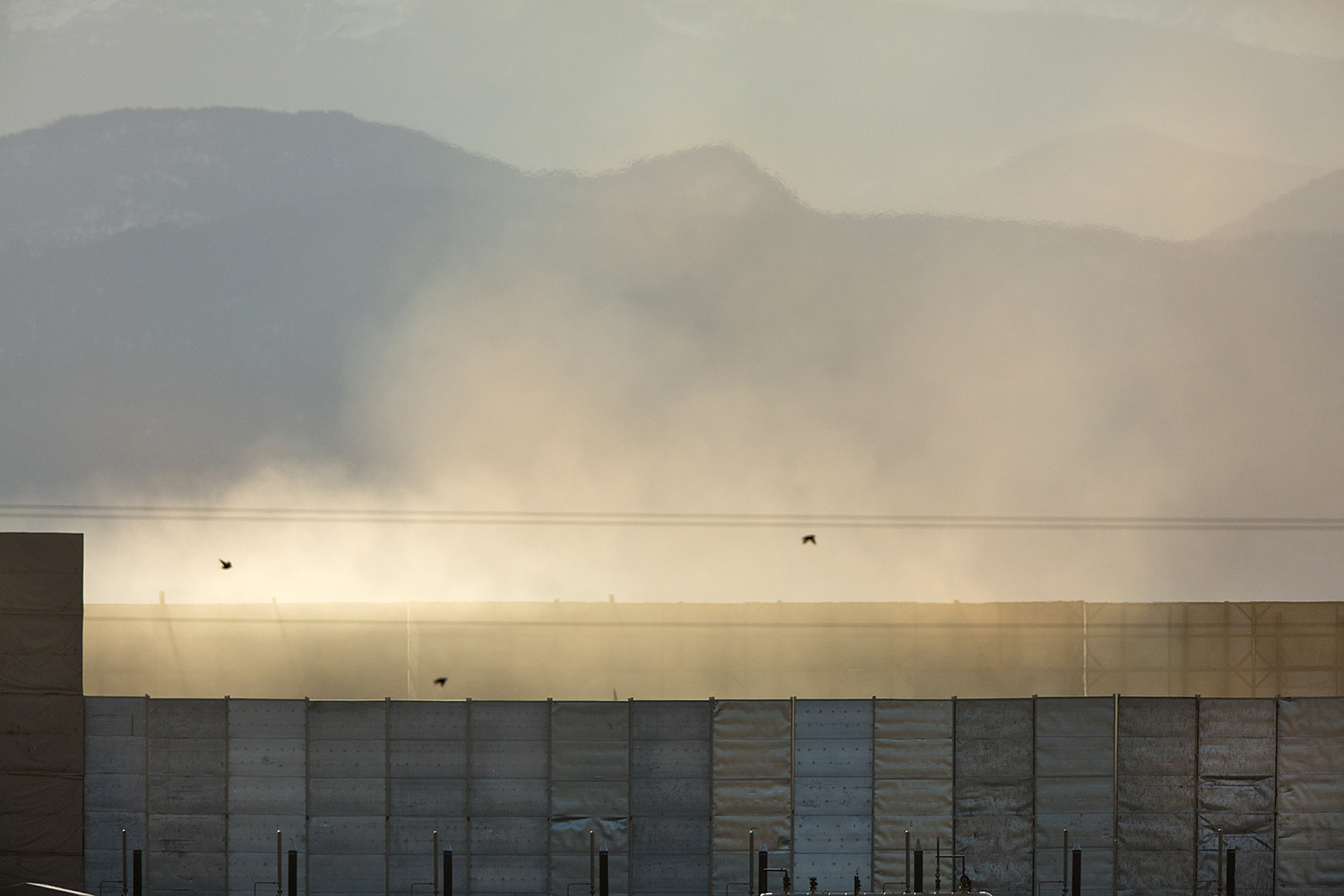
Cloud of dust and other emissions during injection phase of fracking operations near the Bulrush wetlands, near the Erie Bald Eagle nest.
